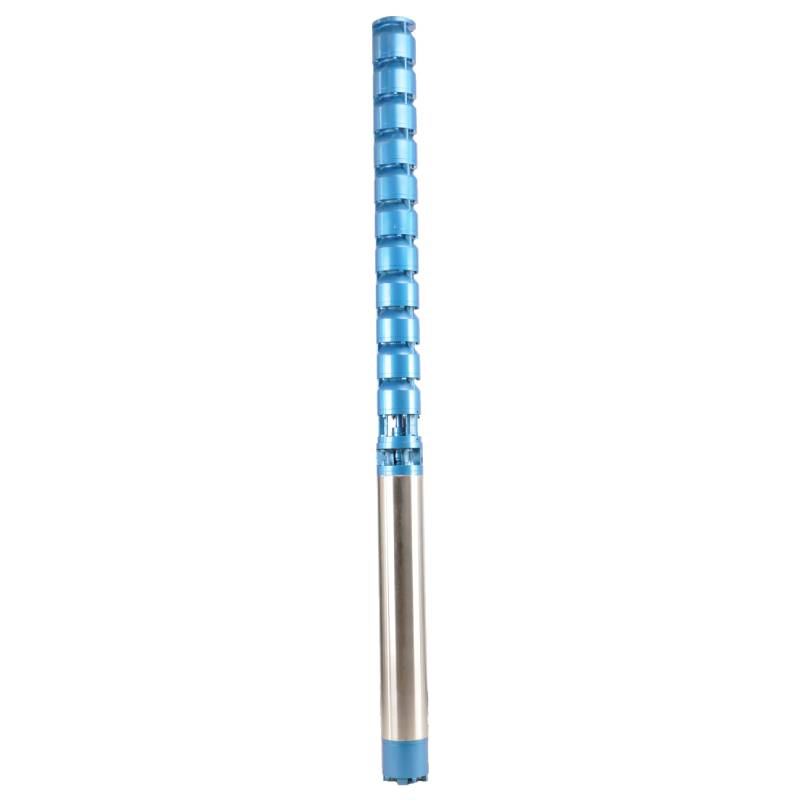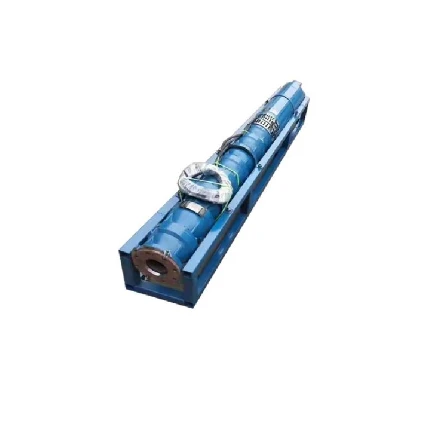Jun . 07, 2025 23:32 Back to list
Understanding Efficient Submersible Pump Operation how submersible pumps work
- The science behind submersible pump operation
- Comparison of leading pump manufacturers
- Customization solutions for specialized applications
- Performance data analysis
- Technological advantages over traditional pumps
- Real-world implementation case studies
- Maintenance fundamentals

(how do submersible pumps work)
How Do Submersible Pumps Work: Core Mechanism Explained
Submersible pumps operate using hermetically sealed motors directly coupled to impellers, enabling complete water immersion without electrical hazards. The pump assembly consists of multiple centrifugal stages stacked vertically within a narrow diameter housing. Water enters through screened intake openings located between the motor and pump section, preventing debris intrusion while ensuring optimal hydraulic flow.
Modern well pumps contain advanced materials like hardened stainless steel impellers (typically 304 or 316 grade) and ceramic shaft bearings capable of 50,000+ operating hours. When energized, the electric motor rotates at 3,450 RPM (standard for 60Hz power) driving the impeller stack to generate kinetic energy that converts to pressure. This pressurized flow travels through the discharge head into plumbing systems, achieving pressure outputs up to 400 PSI in industrial-grade units. Thermal sensors embedded near the motor windings automatically shut down the pump if temperatures exceed 150°F (65°C), protecting against burnout.
Technical Advantages Over Alternatives
Submersible units demonstrate 20-30% greater energy efficiency compared to jet pumps due to minimized friction losses, with typical efficiencies ranging from 60-80% depending on hydraulic design. Their submerged installation eliminates suction limitations inherent to above-ground systems, enabling reliable lift from depths exceeding 1,000 feet. Vibration dampening technology reduces operating noise to <50 decibels - approximately library-level quietness.
The sealed design provides significant benefits over traditional pumps: no priming requirements, freeze protection down to -40°F (-40°C), and saltwater corrosion resistance through epoxy powder coating. Continuous duty cycles support 100% runtime without performance degradation. Multi-stage hydraulic configurations maintain consistent pressure curves across discharge flows varying from 4-5,000 GPM.
Manufacturer Comparison Analysis
| Feature | Franklin Electric | Grundfos | Zoeller | Pentair |
|---|---|---|---|---|
| Motor Efficiency | 92% (ECM models) | 94% (MAGNA3) | 87% | 89% |
| Pressure Range | 40-350 PSI | 50-430 PSI | 30-250 PSI | 35-300 PSI |
| Depth Rating | 1,200 ft | 1,500 ft | 800 ft | 1,000 ft |
| MTBF Rating | 85,000 hours | 95,000 hours | 75,000 hours | 80,000 hours |
| Standard Warranty | 3 years | 5 years | 2 years | 3 years |
Tailoring Solutions for Specific Requirements
Industrial applications require specialized engineering for extreme conditions. Oil drilling operations use 500-horsepower titanium alloy pumps capable of handling 500°F (260°C) temperatures and saline concentrations exceeding 50,000 TDS. Municipal water systems employ custom configurations like 10-stage 400-series stainless steel hydraulic ends for consistent pressure delivery across fluctuating demands.
Agricultural installations leverage intelligent variable frequency drives (VFDs) that automatically adjust pumping rates from 50-100% capacity based on irrigation needs, conserving power consumption during low-demand periods. Corrosive chemical applications demand specialized casing materials: nickel-aluminum bronze for acidic mine water or Hastelloy C-276 pumps for chlorine dioxide bleaching processes. These tailored units demonstrate 5-7 year longevity under conditions where standard pumps fail within months.
Implementation Success Stories
Texas Agriculture: A 5,000-acre pecan farm replaced surface pumps with ten 50HP Grundfos SP submersibles at 550-ft depths, reducing energy costs by $48,000 annually while increasing water delivery reliability during drought seasons. Flow sensors detected pipe fractures within 2 minutes, saving an estimated $85,000 in water loss prevention.
Indonesian Gold Mine: Custom Franklin Electric bimetallic pumps handled 300,000 GPD of pH 3.5 groundwater containing 7% particulate load. Constructed with AISI 444 stainless steel impellers and ceramic shaft seals, the system operated continuously for 22 months without failure, exceeding standard pump lifespans by 300%.
Critical Operational Considerations
Precise impeller clearance maintained within 0.005-0.015 inches prevents cavitation damage and ensures hydraulic efficiency above 80%. Proper voltage stabilization (±5%) using voltage-regulated controllers prolongs motor insulation life by preventing thermal stress. Annually measuring winding resistance with megohmmeters identifies insulation degradation before costly failures occur.
Sand content must not exceed 50 PPM to prevent rapid impeller erosion. Non-return valves prevent backspin startup damage - critical when restarting pumps with 100+ PSI residual pressure. Routine inspections should verify phase balance remains within 2% and running amperage within nameplate ratings to ensure optimal motor efficiency persists throughout its service life.
Understanding How Submersible Pumps Work for Operational Success
The fundamental physics underlying these systems enables their industry dominance: hydraulic efficiency exceeds traditional pump designs by harnessing ambient hydrostatic pressure instead of fighting atmospheric limits. Through multi-stage impellers converting centrifugal force into pressure head, modern units convert 90-95% of electrical energy directly into hydraulic energy with minimal thermal loss.
Advancements in magnetic drive technology (eliminating mechanical seals) and epoxy-encapsulated stator windings have extended equipment lifetimes beyond 100,000 operating hours under ideal conditions. Properly selected and maintained submersible pumps deliver 5-8% lower lifecycle costs than surface alternatives even before accounting for maintenance savings. Their reliability in critical applications continues making them indispensable across water infrastructure worldwide.

(how do submersible pumps work)
FAQS on how do submersible pumps work
Q: How do submersible pumps work?
A: Submersible pumps operate fully immersed in fluid, with a sealed electric motor driving an impeller. This creates pressure to push liquid upward through a discharge pipe efficiently. The submersible design prevents issues like cavitation.
Q: How do submersible well pumps work?
A: These pumps are lowered into wells, and water enters through an intake at the bottom. An internal motor spins multi-stage impellers to generate centrifugal force, lifting water through a pipe to the surface. This setup handles deep well environments effectively.
Q: What is the basic mechanism of submersible pumps?
A: They rely on a hermetically sealed motor connected to a pump shaft and impeller. When energized, the impeller accelerates fluid, creating suction and pressure for vertical movement. Submersion eliminates priming needs for reliable liquid transfer.
Q: How does a submersible well pump operate?
A: Submerged in the well's water, the pump's motor powers rotating impellers or stages. These accelerate water, pushing it up through a drop pipe using centrifugal force. This design ensures efficient lifting from deep wells to supply systems.
Q: How are submersible pumps different, and how do they function?
A: Unlike surface pumps, they are sealed and submerged to handle direct fluid contact. The motor drives impellers that force liquid up vertically, avoiding air locks. This makes them ideal for deep-water applications like wells or sumps.
-
Water Pumps: Solutions for Every Need
NewsJul.30,2025
-
Submersible Well Pumps: Reliable Water Solutions
NewsJul.30,2025
-
Stainless Steel Water Pumps: Quality and Durability
NewsJul.30,2025
-
Powerful Water Pumps: Your Solution for Efficient Water Management
NewsJul.30,2025
-
Oil vs Water Filled Submersible Pumps: Which is Better?
NewsJul.30,2025
-
Deep Well Pumps: Power and Reliability
NewsJul.30,2025
-
 Water Pumps: Solutions for Every NeedWhen it comes to handling dirty water, the dirty water pump is a must-have.Detail
Water Pumps: Solutions for Every NeedWhen it comes to handling dirty water, the dirty water pump is a must-have.Detail -
 Submersible Well Pumps: Reliable Water SolutionsWhen it comes to ensuring a reliable water supply, submersible well pumps are a top choice.Detail
Submersible Well Pumps: Reliable Water SolutionsWhen it comes to ensuring a reliable water supply, submersible well pumps are a top choice.Detail -
 Stainless Steel Water Pumps: Quality and DurabilityWhen it comes to choosing a water pump, the stainless steel water pump price is a crucial factor.Detail
Stainless Steel Water Pumps: Quality and DurabilityWhen it comes to choosing a water pump, the stainless steel water pump price is a crucial factor.Detail
